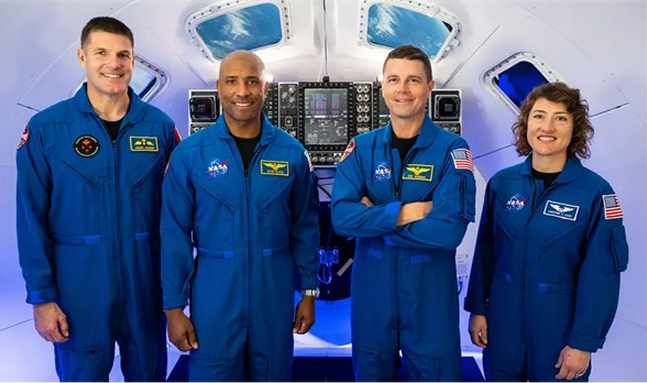
Artemis II: NASA’s 1st moon crew in 50 years includes woman, Black astronaut

NASA on Monday (April 3) named the four astronauts who will fly around the moon late next year, including the first woman and the first African American assigned to a lunar mission.
The names of the three Americans and one Canadian, the first moon crew in 50 years, were announced during a ceremony in Houston, home to the nation’s astronauts as well as Mission Control.
Also read: Nasa’s Artemis 1 to pave way for manned Moon missions after 50 yrs
“This is humanity’s crew,” said NASA Administrator Bill Nelson.
The four astronauts will be the first to fly NASA’s Orion capsule, launching atop a Space Launch System rocket from Kennedy Space Center no earlier than late 2024.
Even though they will not land or go into lunar orbit, the team would fly around the moon and head straight back to Earth, marking a prelude to a lunar landing by two others a year later.
The mission’s commander, Reid Wiseman, will be joined by Victor Glover, an African American naval aviator; Christina Koch, who holds the world record for the longest spaceflight by a woman; and Canada’s Jeremy Hansen, a former fighter pilot and the crew’s lone space rookie. Wiseman, Glover and Koch have all lived on the International Space Station. All four are in their 40s.
“This is a big day. We have a lot to celebrate and it’s so much more than the four names that have been announced,” Glover said.
Also read: What Nasa’s epic Artemis 1 Moon mission is all about
This is the first moon crew to include someone from outside the US and the first crew in NASA’s new moon program named Artemis after the twin sister of Apollo. Late last year, an empty Orion capsule flew to the moon and back in a long-awaited dress rehearsal.
“Am I excited? Absolutely,” Koch said to cheers from the crowd of schoolchildren, politicians and others. “But my real question is: Are you excited?” she said to more cheers.
The Canadian Space Agency snagged a seat because of its contributions of big robotic arms on NASA’s space shuttles and the space station. One is also planned for the moon project.
Hansen said “he’s grateful that Canada is included in the flight.” “We are going to the moon together. Let’s go!” he said.
During Apollo, NASA sent 24 astronauts to the moon from 1968 through 1972. Twelve of them landed. All were military-trained male test pilots except for Apollo 17s Harrison Schmitt, a geologist who closed out that moonlanding era alongside the late Gene Cernan.
Provided this next 10-day moonshot goes well, NASA aims to land two astronauts on the moon by 2025 or so.
NASA picked from 41 active astronauts for its first Artemis crew. Canada had four candidates.
Almost all of them took part in Monday’s ceremony at Johnson Space Center’s Ellington Field, a pep rally of sorts that ended with Wiseman leading the crowd in a chant.
Also read: Can clouds of Moon dust combat climate change? It’s complicated
Congratulations streamed in from retired astronauts, including Apollo 11’s Buzz Aldrin and Scott Kelly, the first American to spend close to a year in space.
“Huge risks, huge commitment, eternal benefits for all. What a crew!” tweeted Chris Hadfield, the first Canadian commander of the space station a decade ago who performed David Bowie’s Space Oddity from orbit.
The @NASA Artemis II crewed mission around the Moon will inspire the next generation of explorers, and show every child – in America, in Canada, and across the world – that if they can dream it, they can be it. pic.twitter.com/X8q3GLTBiQ
— President Biden (@POTUS) April 3, 2023
US President Joe Biden spoke with the four astronauts and their families on Sunday. In a tweet Monday, Biden said the mission will inspire the next generation of explorers, and show every child in America, in Canada, and across the world that if they can dream it, they can be it.
(With inputs from agencies)


